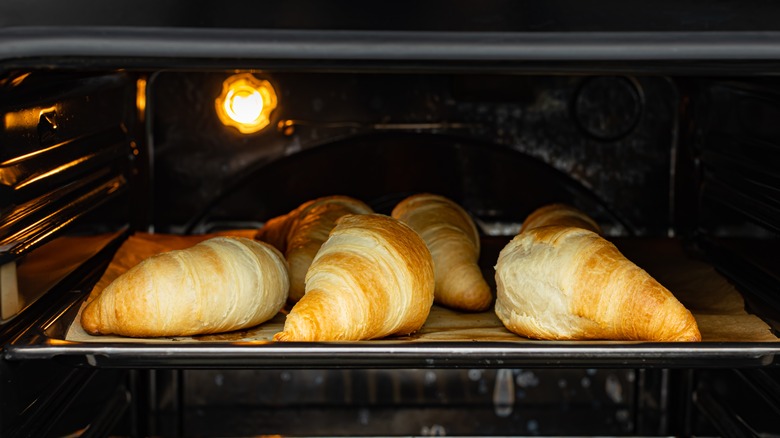The Reason You Should Avoid Using Dark Metal Pans In A Gas Oven
When you're ready to slide a pan into your gas oven, the color and material of your bakeware aren't details to overlook. Dark metal pans are known for their durability and effective heat conduction, but this efficiency comes with a few key caveats, especially when they're used in gas ovens. Understanding the interaction between your dark-colored bakeware and the oven's heating mechanism is key to avoiding culinary disappointments.
The primary issue with dark metal pans has to do with heat. Thanks to their color, these pans absorb heat quickly and to a higher degree than lighter-colored pans. In a gas oven, which often has hot spots due to the way the heat circulates inside, this can be made all the more intense. This spells a greater risk of burning or overcooking your food. You may find that the bottom or edges cook relatively quickly, while the top and middle struggle to catch up and can remain underdone.
Additionally, when it comes to temperature control, gas ovens can be fickle. The added variable of a dark pan's quick heating properties can throw off your baking times and temperatures. But what if a dark metal pan is all you have at your disposal? All is not lost. You can still produce fine-baked goods by employing a few strategic practices.
How to bake in a dark metal pan without burning food
To avoid burning food on a dark pan, first consider lowering the oven's heat. Reducing the baking temperature by 25 degrees Fahrenheit can account for the pan's heat absorption, bringing the actual cooking temperature closer to what's in the recipe. Additionally, start checking for doneness several minutes before the timer goes off. Insert a toothpick or knife to test doneness, or use a thermometer to check the internal temperature of your baked goods starting about 10 minutes early.
Alternatively, wrapping the pan's exterior in aluminum foil can reflect some of the heat away, reducing the risk of over-browning. The foil acts as a heat shield, lessening the direct intensity of the oven's flame on the pan's surface. Finally, if you're still encountering issues with burning, try repositioning your pan within the oven. Moving it upwards helps distance your food from the direct heat source at the bottom of the oven, allowing for gentler baking and avoiding overbaked or burnt bases.

